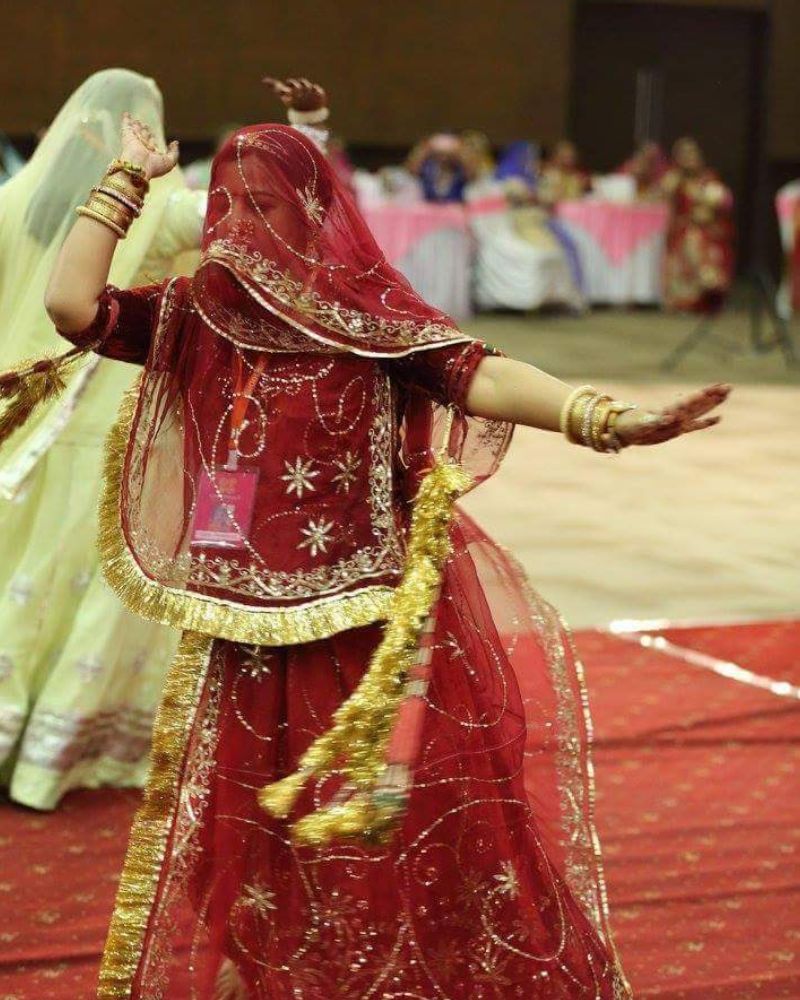Ghoomar: The Whirling Elegance of Rajasthan’s Cultural Pride

Ghoomar, a traditional folk dance of Rajasthan, embodies the spirit, grace, and vivacity of the desert state. Known for its swirling movements and vibrant attire, Ghoomar is more than just a dance form—it is a symbol of Rajasthan’s rich cultural heritage, artistic expression, and community bond. Rooted in the social fabric of Rajasthani culture, Ghoomar continues to be a prominent dance, performed at various celebrations, weddings, and festivals, uniting people in joy and celebration.
Origins and History
Ghoomar has its origins in the royal palaces of Rajasthan, specifically in the Mewar region, where it was initially performed by Rajput women. The dance is believed to have been named after the ghoomna or the act of spinning, which is central to the dance’s unique movements. Traditionally, Ghoomar was performed by women in groups, with a circular formation symbolizing unity and harmony. It was often performed as part of celebrations marking auspicious events such as weddings, harvests, or religious festivals.
Over time, Ghoomar expanded beyond the royal courts to become a popular dance form among all social classes, especially in rural Rajasthan. It is still widely practiced today and is celebrated for its elegance, beauty, and energy.
Elements and Movements of Ghoomar
The most distinctive feature of Ghoomar is the graceful spinning, which forms the heart of the dance. Dancers, dressed in colorful, traditional Rajasthani attire, perform a series of rhythmic movements that involve turning in circles while maintaining graceful hand gestures and poised stances. The movements are synchronized to the beat of traditional music played on instruments such as the dholak, tabla, sarangi, and harmonium.
The dance is typically performed by women, who wear long, flowing skirts (ghagras) and tops (cholis) adorned with mirrors and intricate embroidery. The swirling motion of the dancers’ skirts adds a dynamic element to the performance, making it visually captivating. The dance’s steps include graceful arm movements, rhythmic foot tapping, and the signature whirling spins that embody the joyful exuberance of the performers.
Cultural Significance
Ghoomar is much more than a dance; it is an integral part of Rajasthani culture and identity. The dance holds special significance in Rajasthan's festivals and celebrations. It is commonly performed during the festival of Teej, marking the arrival of the monsoon season, and Gangaur, a celebration of marriage and harvest. During weddings, Ghoomar is often a centerpiece of the festivities, bringing families and communities together in shared joy and celebration.
The dance also reflects the socio-cultural dynamics of Rajasthan. Traditionally, Ghoomar was a way for women to express themselves freely within the cultural constraints of their time. It gave them a platform to come together, celebrate, and bond, while also serving as a display of grace and elegance. Even today, Ghoomar serves as a unifying force in communities, with people from various backgrounds joining together to celebrate cultural heritage.
Ghoomar’s Global Recognition
In recent years, Ghoomar has gained recognition beyond the borders of Rajasthan, finding a place in Indian cultural festivals across the world. The dance has become a symbol of Rajasthani pride, showcased at various events celebrating Indian culture, both within India and among the global Indian diaspora. International performances and competitions have helped bring the traditional art form to a broader audience, highlighting its significance as part of India’s diverse cultural landscape.
In popular culture, Ghoomar has also made its way into Bollywood, where it is often featured in films set in Rajasthan or depicting traditional Indian festivities. The dance’s captivating visual appeal and rhythmic beauty continue to capture the imagination of people worldwide.
Ghoomar is a dance that transcends the boundaries of tradition, beauty, and cultural significance. With its intricate footwork, graceful twirls, and vibrant costumes, it reflects the rich artistic heritage of Rajasthan. Whether performed in a royal palace, a rural village, or a global stage, Ghoomar continues to evoke a sense of pride, joy, and unity. As it continues to be celebrated by new generations, Ghoomar remains a symbol of Rajasthan's timeless cultural elegance, preserving its spirit for the future.